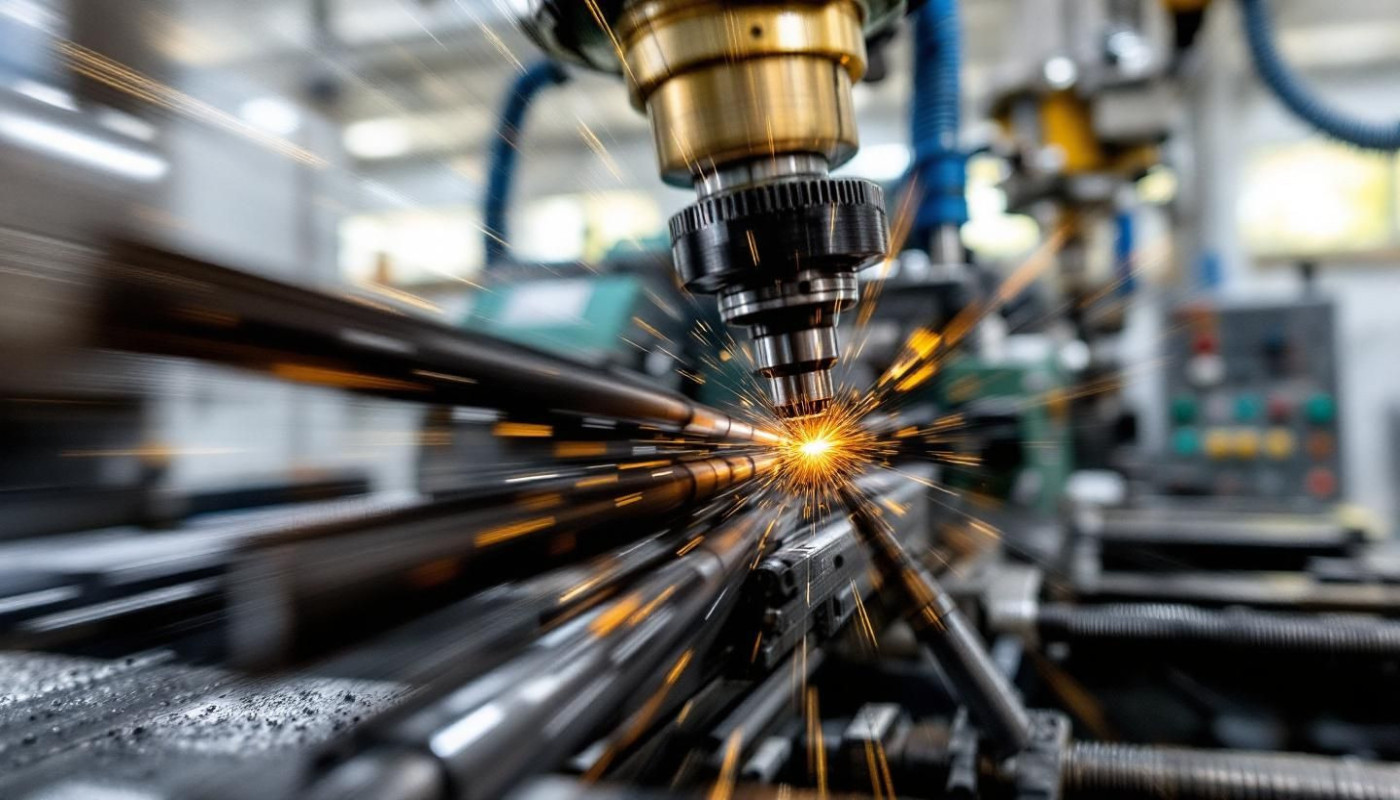Table of contents
Multi-spindle lathes have become a game-changer in today's fast-paced manufacturing landscape. With their advanced capabilities for simultaneous machining, these machines are redefining productivity and efficiency in industrial settings. Explore how this technology is reshaping processes, reducing lead times, and driving innovation in the manufacturing sector by reading the following paragraphs.
Understanding multi-spindle lathes
A multi-spindle lathe is an advanced turning machine designed for high-volume CNC machining environments, enabling the simultaneous machining of multiple workpieces. Unlike single-spindle models that process one component at a time, these machines are equipped with several spindles, often mounted in a rotating drum configuration. Each spindle can hold a different part or perform distinct operations, allowing for parallel processing and drastically reducing cycle times. The turret, a rotating tool holder, plays a vital role in precision manufacturing by quickly and accurately positioning various cutting tools to each workpiece, contributing to both versatility and accuracy.
Simultaneous machining is a defining characteristic of the multi-spindle lathe, as it means several operations—such as drilling, turning, and threading—can occur at once across multiple axes. This increases throughput and consistency, making the technology highly valuable in sectors that demand precise, repeatable parts. The integration of industrial automation further enhances these systems, with computerized controls managing tool changes, spindle speeds, and part handling without manual intervention. This blend of CNC machining capabilities and automation ensures optimal productivity, reduced labor costs, and consistently high-quality outputs in modern production environments.
Boosting productivity and efficiency
Multi-spindle lathes represent a breakthrough in manufacturing efficiency by vastly exceeding the performance capabilities of traditional single-spindle machines. These advanced lathes utilize several spindles in parallel, enabling high-speed machining and automated turning of multiple parts simultaneously. This configuration delivers a dramatic cycle time reduction, as each spindle can perform different operations on a component during a single machine cycle. Spindle indexing allows for precise repositioning and seamless transition between cutting processes, which not only boosts productivity in manufacturing but also enhances output quality. Manufacturers adopting multi-spindle technology consistently report higher throughput, superior process consistency, and optimized resource allocation compared to facilities relying solely on conventional lathes. The integration of automated turning with synchronized spindle movement ensures that large production runs are completed faster, with minimal operator intervention and significantly fewer bottlenecks in workflow.
Reducing costs in production
Adopting multi-spindle lathes brings significant operational savings through simultaneous machining of multiple parts, enabling cost-effective machining for both high-volume and small-batch production. This technology integrates seamlessly with bar feeders, automating the supply of raw material and reducing manual intervention, which not only minimizes labor requirements but also streamlines lean manufacturing practices. Multi-spindle lathes optimize production workflows by allowing different operations to occur in parallel, leading to substantial manufacturing cost reduction and enhanced throughput. Material waste is minimized as the precise and synchronized tool movements reduce the likelihood of errors and scrap, supporting a more sustainable approach to manufacturing. Production optimization is further enhanced by the flexibility to adapt quickly to varied order sizes, making these lathes valuable in both large factories and specialized job shops seeking consistent, cost-effective results.
Enhancing precision and consistency
Multi-spindle lathes are redefining standards in precision engineering by delivering unrivaled levels of accuracy across simultaneous machining operations. These advanced machining technology solutions are specifically designed to maintain tight tolerances and minimize runout, which is vital in industries where every micron matters. Consistent quality is achieved even during complex machining cycles, as each spindle operates with independent controls and synchronized movements, ensuring that every component meets strict dimensional criteria. CNC precision allows manufacturers to automate quality assurance protocols, reducing human error and guaranteeing that finished parts are uniform in specification and finish. For professionals focused on compliance with international standards and elevated customer expectations, the adoption of multi-spindle lathes is a strategic choice that supports both high output and repeatability. To explore how these machines can optimize your production and meet modern quality demands, visit site.
Future trends and innovations
Multi-spindle lathes are experiencing rapid advancements, reshaping the landscape of smart manufacturing through integration with digital factory ecosystems and Industry 4.0 frameworks. Machine tool innovation is now focused on seamless connectivity, allowing real-time data exchange between lathes and centralized management platforms. This connectivity leverages IoT applications, enabling enhanced process monitoring, adaptive control, and far-reaching visibility across production lines. HMI (Human-Machine Interface) improvements are making operator interactions more intuitive, facilitating complex programming and diagnostics with greater ease, and reducing training time for new personnel. These interfaces often incorporate touchscreens, visual data dashboards, and even voice-activated controls, streamlining operations and error resolution.
Digitalization is accelerating the deployment of predictive maintenance strategies in modern multi-spindle lathes. By continuously analyzing sensor data, these machines can forecast potential component failures or maintenance needs, minimizing unplanned downtime and optimizing operational efficiency. The potential impact on industry practices extends to just-in-time production, resource allocation, and overall equipment effectiveness. As manufacturers embrace the principles of the digital factory, multi-spindle lathes are set to become cornerstones of highly automated, data-driven environments. These trends signal a shift toward more agile, resilient, and productive manufacturing systems, where machine tool innovation and connectivity drive continuous improvement and competitiveness.
Similar

Exploring The Impact Of Swiss Banking Laws On International Finance?

Comparative Analysis: What Features Define The Best Shared Workspaces?

How Sustainable Practices Enhance Corporate Resilience And Value

Exploring The Benefits Of Diverse Payment Options For Online Game Purchases

Exploring The Strategic Advantages Of A Forex Business Setup

Understanding the gig economy how businesses can capitalize on freelance talent

Understanding Imputation Credits And Their Impact On Businesses

Exploring The Benefits Of Generative AI For Diverse Industries

How To Measure The ROI Of Project Management Software

Understanding The Impact Of Small Business Statistics On Strategic Planning

